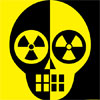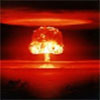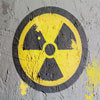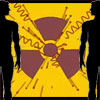Nuclear Radiation: The Thresholds Of Agony ~ Part II
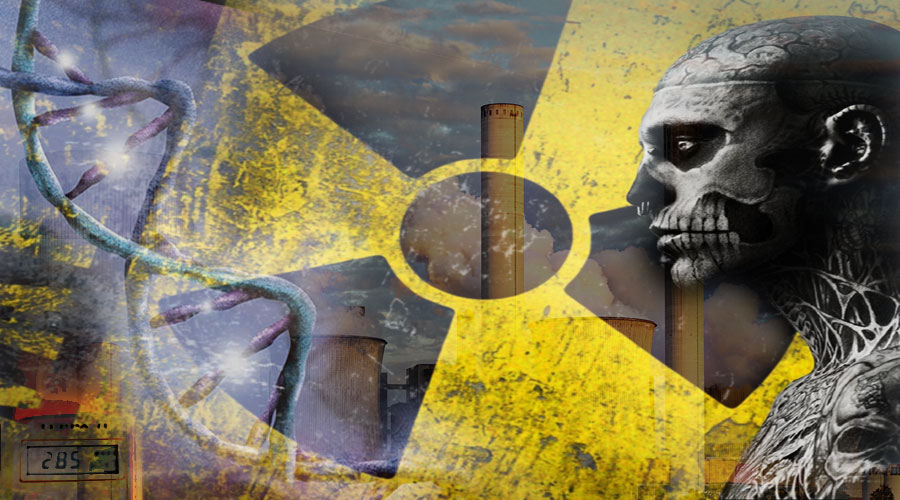 by Richard Curtis & Elizabeth Hogan
by Richard Curtis & Elizabeth Hogan
Thus far we have been discussing acute effects (see Part I here) of large doses of radiation taken on the whole body or on specific organs and tissues, the kind of doses likely to be received by people in the immediate and intermediate vicinity of a serious reactor accident. Suppose it could be vouchsafed that no such calamity would ever happen: Would you then be able to rest easily?
The answer is most emphatically No. As we shall see, the merely commonplace activities of the nuclear industry, the mining, milling, and processing of fuel, the day-to-day operations of nuclear electric plants, the reprocessing of fuel, and the transportation, storage, and disposal of waste fission products, are already contaminating our air and water with radioactivity. If the atomic power program is permitted to proliferate in the coming decade, the presence of these poisons in our environment will reach alarming proportions.
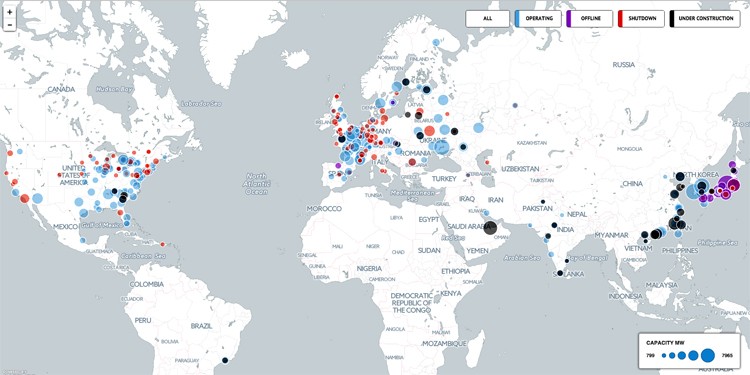 Nuclear Reactors Around The World (2016)
Nuclear Reactors Around The World (2016)
Just how much does our level of “background radiation” have to be raised to be considered alarming? The accretion of evidence garnered in the last twenty years or so by a large number of responsible scientists demonstrates that there is no radiation threshold below which genetic damage, cancer, or shortening of life is impossible. Any does, however small, will take some toll of vital cell material, and may initiate far-reaching, harmful processes.
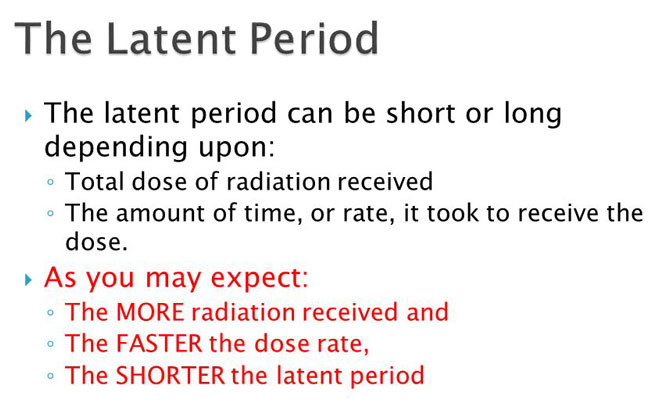 Cancer:
Cancer:
While there is no argument that radiation causes many forms of cancer, including leukemia (“blood cancer”), there has been debate over the threshold dose. Research findings have been clouded because scientists still haven’t recognized precisely what it is that makes a cell cancerous, nor have they been able to sort out the many factors besides radiation that might, over a period of years, cause or nourish the disease.
In spite of this confusion, two indisputable certainties have now emerged. The first is that cancer can begin when a single cell is altered in such a way that its normal self-reproductive powers are affected. Such a cell begins multiplying rapidly, undeterred by influences which customarily inhibit cell growth. The second certainty is that the nucleus of a cell, in which are contained the cell’s reproductive mechanisms, can be damaged by a single particle of radiation. Although Hermann J. Muller, as long ago as 1927, demonstrated the effects of radiation on reproductive processes – for which he won a Nobel Prize – it has more recently been shown by Robert C. Von Borstel of Oak Ridge National Laboratory that just one alpha particle irradiating the nucleus of an insect egg will kill that egg.
The only question remaining is how long it takes before a malignancy manifests itself. The answer is, it may take generations of the given cell type. The “turn-over” in some skin cells, for instance, is about four months, but it may take years or even decades before the “descendants” of a radiation-damaged skin cell form cancerous ulcerations.
The direct relations between cancer and infinitesimal amounts of radiation has been particularly well illustrated in leukemia. Studies of Japanese cases show a straight-line relation between dosage and leukemia-induction down to nearly zero. Even as early as 1948, R. N. P. Knowlton at Los Alamos had shown that no more than .2 r – one fifth of one roentgen – per week of gamma radiation was sufficient to depress white cell numbers, and even smaller radiation doses produced detectable abnormalities in the lymphocytes as demonstrated by Dr. M. Ingraham II in 1952. Though such abnormalities did not produce immediate ill effects, it was thought that they could well be the forerunners of anemia, leukemia, and other serious or fatal blood diseases. Analyses of leukemia incidence in bomb victims, radiologists, and persons irradiated as treatment for various ailments, made in 1957 by E. B. Lewis of the California Institute of Technology, pointed to a possible threshold lower than the amount of radiation we will be exposed to as a result of growing radiation in our environment from normal operations of nuclear plants and related facilities.
Thus, in the words of Schubert and Lapp:
“In the light of recent data provided by the careful examination of patients who have less than the present-day maximum permissible levels of radium in their bones but who nonetheless exhibit bone lesions, we feel that the concept of threshold for radiation injury is probably wrong. Any radiation produces some biological effect, which would be demonstrated if our methods of assay were sensitive enough to detect it.”
One of the most highly regarded experts on environmental cancer is Dr. W. C. Hueper of the National Cancer Institute. In an exhaustive study Dr. Hueper listed the report of carcinomas and sarcomas attributable to radiation of one kind or another, natural and man-made. His concluding sentence is worthy of quotation:
“The sum total of the numerous observations on occupational, medicinal and environmental radiation cancers cited, indicates that civilized and industrial mankind has entered an artificial carcinogenic environment, in which exposures to ionizing radiations of various types and numerous sources will play an increasingly important role in the production of cancers.”
The connection between radiation and cancer has been brought officially to the attention of the American people and its Government through The President’s Commission on Heart Disease, Cancer and Stroke. In Volume II of its Report to the President, February 1965, the Commission stated that “The prevention of cancer at present involves avoidance or removal of known environmental causes of cancer. This includes avoidance of unnecessary and avoidable exposure to ionizing radiation and excessive exposure to ultra-violet radiation…”
Unfortunately, because such visible and palpable agents as cigarette smoke, industrial smoke, chemical insecticides, and the like are more likely to stimulate associations in the public mind with cancer, radiation has largely been overlooked as a key carcinogenic factor. The late Rachel Carson’s book Silent Spring is widely remembered (though, sadly, also widely ignored) as a study of chemical poisons in our environment. A closer reading, however, reveals her equally deep concern with radioactivity. The conclusion of her chapter on environmentally caused cancer deserves citation here:
“Today we find our wold filled with cancer producing agents. An attack on cancer that is concentrated wholly or even largely on therapeutic measures (even assuming a “cure” could be found) in Dr. Hueper’s opinion will fail because it leaves untouched the great reservoirs of carcinogenic agents which would continue to claim new victims faster than the as yet elusive “cure” could allay the disease…
In one important respect the outlook is more encouraging than the situation regarding infectious disease at the turn of the century. The world was then full of disease germs, as today it is full of carcinogens. But man did not put the germs into the environment and his role in spreading them was involuntary. In contrast, man has put the vast majority of carcinogens into the environmnet, and he can, if he wishes, eliminate many of them…”
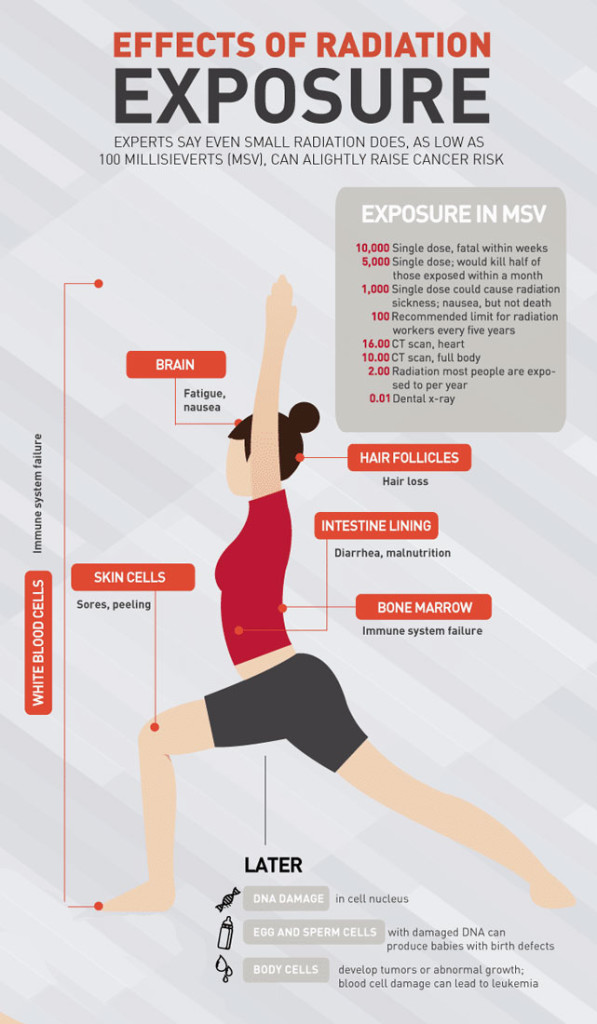 Shortening of Life:
Shortening of Life:
To what extent radiation shortens human life – and in this context we mean simply premature aging rather than curtailment of life due to some specific radiation effect like cancer – it is difficult to say. Statistical measurement is impossible, both because of the time factor and the innumerable variables involved. But scientists believe that radiation of any amount definitely ages the population so that it dies off from all causes at earlier ages than it otherwise would. They have managed to extrapolate to human values observations made of mice and other experimental subjects, a process which, though subject to some error, can still give us a rough idea of what we can expect for the human condition. Robert S. Stone, in a paper entitled “Maximum Permissible Exposure Standards,” stated the following:
“…It has been shown with certainty insofar as mice are concerned that exposure to daily doses of X-rays of slightly greater than 1 r causes a reduction in lifespan. Boche has shown that the lifespan of the rat is definitely shortened by daily exposures of 0.5 r per day. Even this provides a safety of only 2.”
Walter R. Guild, assistant professor of biophysics at Yale University, in an essay on “Biological Effects of Radiation,” also extrapolated results of life-shortening experiments on mice and surmised that intense single doses of 300-400 r will shorten human life by between four and nine days per roentgen of exposure. What about lesser doses?
“There seems,” he concluded, “to be no dose threshold for the life-shortening effect.”
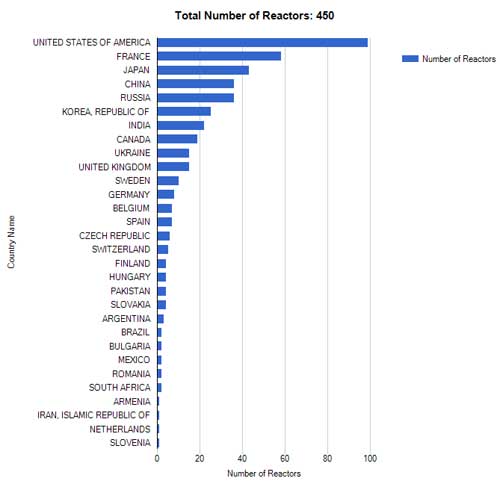
As of 2016 (source)
Genetic:
Ordinarily a gene, the fundamental unit of heredity located in the chromosomes of cells, is stable. It copies itself unerringly generation after generation. Occasionally, however, it undergoes a spontaneous change, presumably chemical, called a mutation. Then a gene that had hitherto been producing, say, blue eyes suddenly starts producing brown eyes. From then on, all future generations derived from that gene are brown-eyed. Such gross alterations of hereditary characteristics can also result from breakage of chromosomes, the bodies containing genes, and rearrangement of the broken chromosome parts.
Under natural conditions, mutations are exceedingly rare, on the order of one in 100,000 generations. But Muller, in the 1920s, exposing fruit flies to radiation managed to increase the number of hereditary abnormalities in their descendants. Subsequent studies in a wide range of plants and animals confirmed Muller’s discoveries: In every organism examined, it has been observed that high-energy radiation reaching the chromosomes will produce mutations.
The number of mutations has been shown to be directly proportional to the amount of radiation, right down to low levels. The important question is, how low does the level go before we can declare unequivocally that no genetic damage will occur? In 1960 Jame F. Crow, professor of genetics at the University of Wisconsin School of Medicine and president of the Genetics Society of America, provided the chilling answer:
“Geneticists are convinced that there is no threshold for radiation-induced mutations: that is, there is no dose so low that it produces no mutations at all. Each dose, however small, that reaches the germ cells between conception and reproduction carries a risk to future generations proportional to the dose.”
What could this mean for the future of mankind? Professor Crow, calculating the possibilities in an article entitled ‘Radiation and Future Generations,’ suggested that for every roentgen of slow radiation, the kind of radiation we can expect to receive in increasing doses from peacetime nuclear activity, about five mutations per hundred million genes exposed will manifest themselves, meaning that “after a number of generations of exposure to one roentgen per generation, about one in 8000 of the population in each generation would have severe genetic defects attributable to the radiation.”
What are some of the more harmful defects geneticists fear? A few examples are hemophilia, erythroblastosis fetalis (a blood disease of the fetus or newborn child), familial periodic paralysis, nervous and mental diseases, metabolic and allergic disorders, and certain congenital diseases.
A variety of anomalies, many verging on the monstrous, are possible as a result of radioactive damage to the genes. Gigantism, dwarfism, albinism, clubfoot, harelip, cleft palate, Siamese twins, Janus monsters (two faces on a single head and body), phocomelia (rudimentary limbs), sirenomelus (legs fused with no separate feet), hydrocephalus (grotesquely distended head), hermaphroditism (physical bisexuality) may be induced by radioactive bombardment of reproductive cells.
Of course, in the evolutionary process, harmful mutations – and most mutations are decidedly harmful – tend to eliminate the hereditary lines that carry them, because of sterility, disease, and feebleness. But even if this process of natural selection does erase harmful strains, the elimination process itself entails suffering of every imaginable sort, whole heritages of suffering perpetuated from parent to child to grandchild until the last tormented descendant is laid to rest.
That henceforth man must live in constant dread of a major nuclear accident which will wreak death and harm on a level potentially surpassing Hiroshima and Nagasaki, is unnerving enough, certainly. But we must realize that even if such accidents are averted, the slow, silent saturation of our environment with radioactive poisons will be raising the odds that you or your heirs will fall victim to any one of the horrors depicted here, and possibly to some unexperienced in human history.
Excerpt from Perils Of The Peaceful Atom
Posted in Other Topicswith comments disabled.


